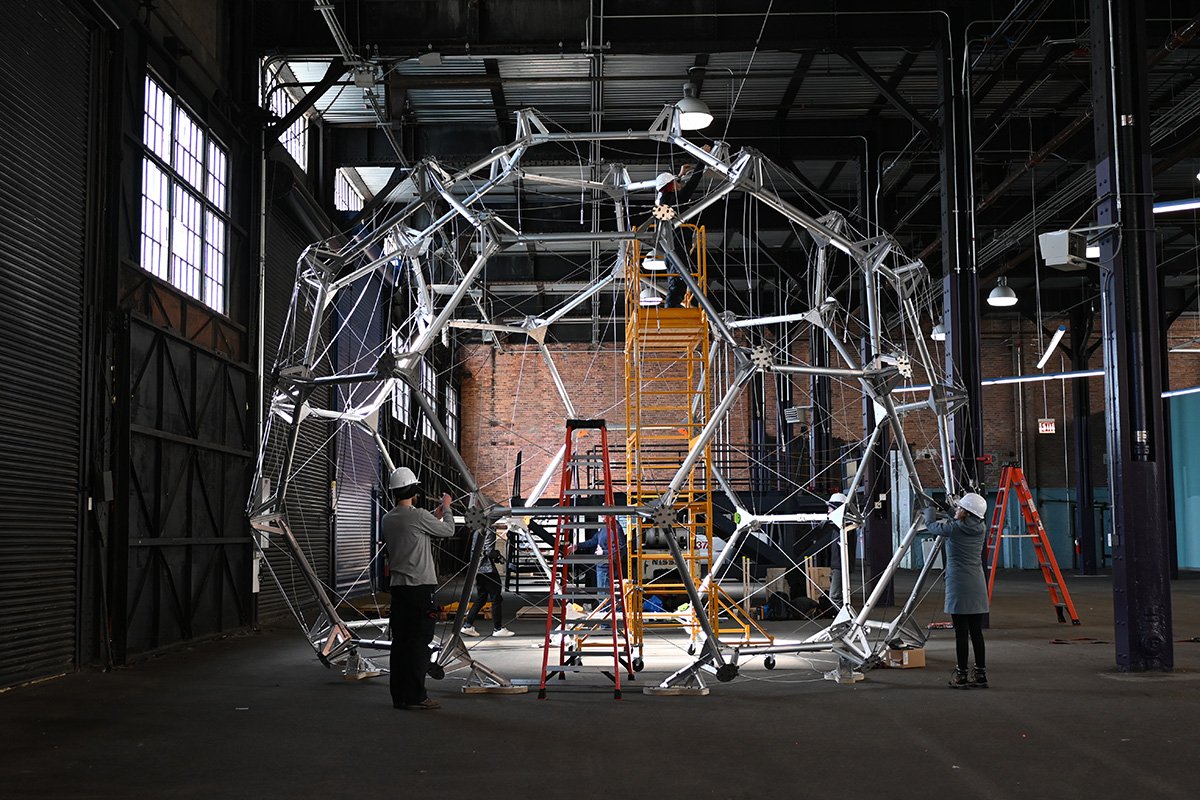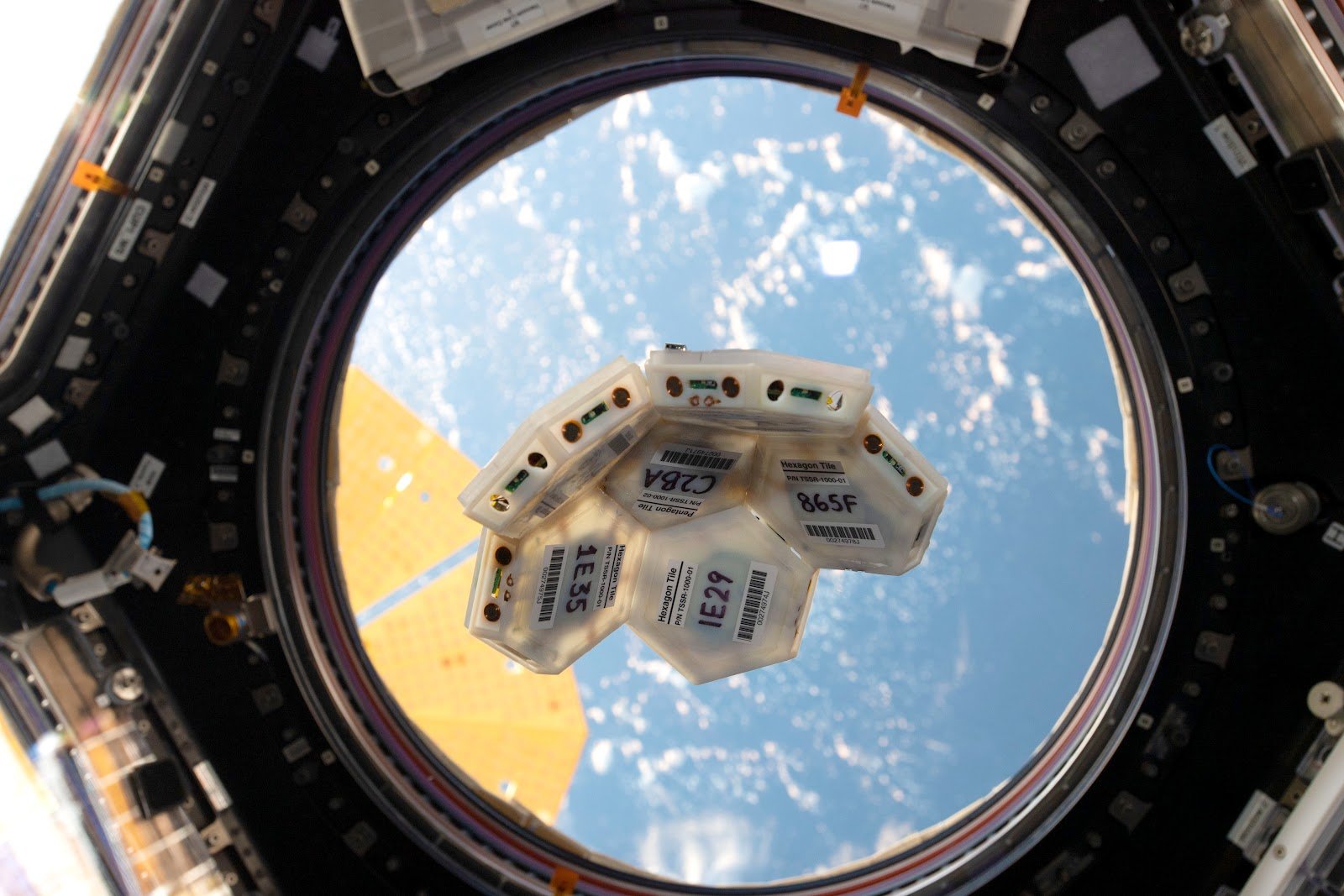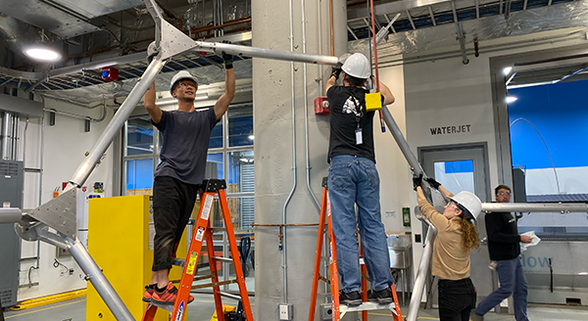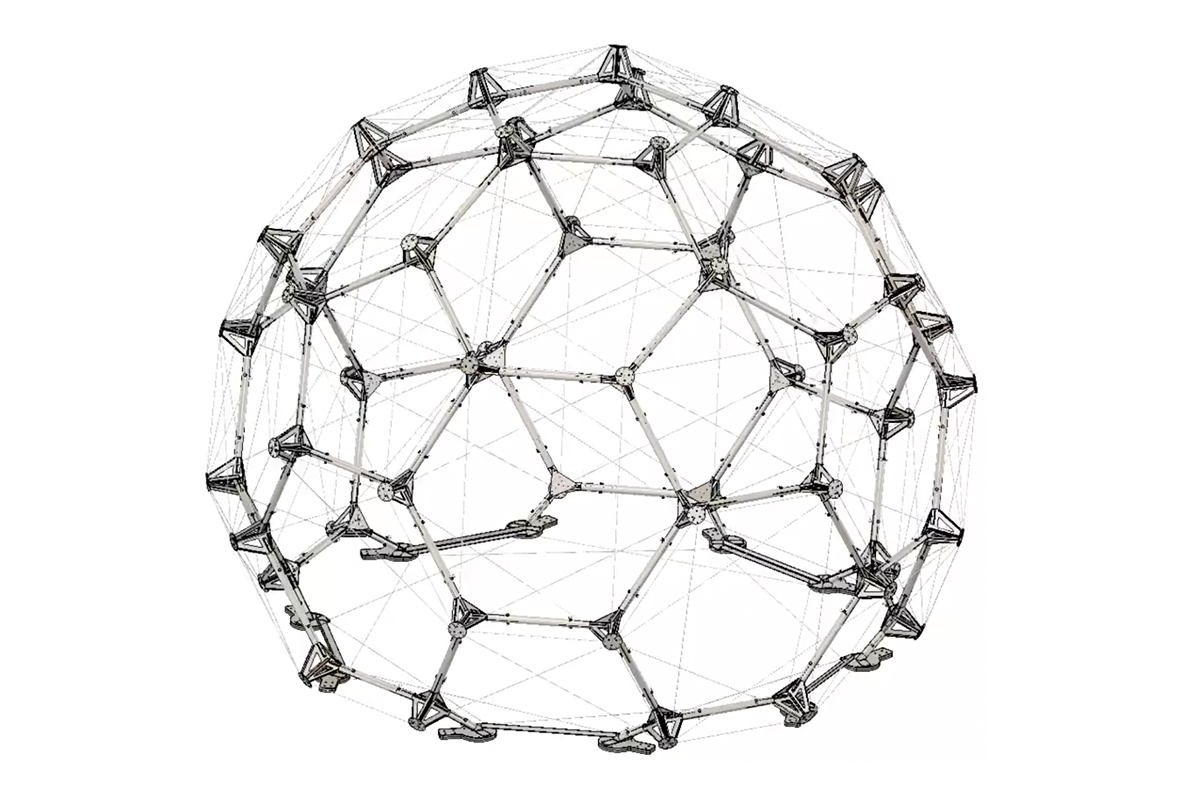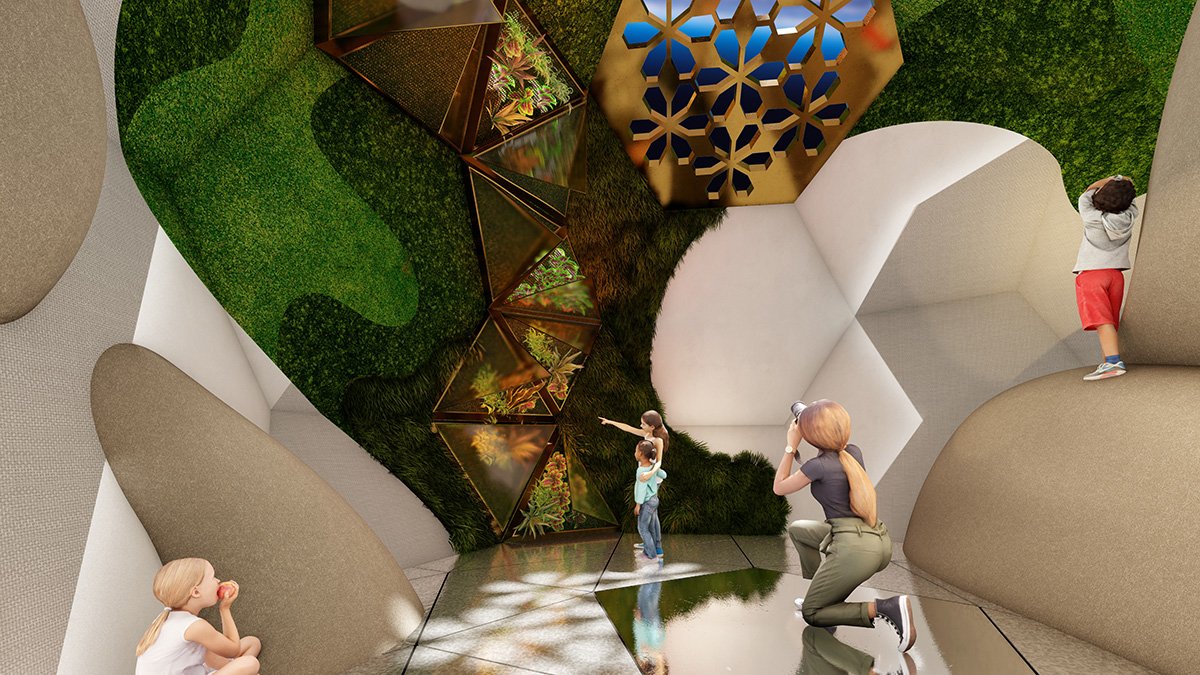TESSERAE Pavilion: A new kind of space habitat
We’re excited to share updates on the largest-scale project we’ve undertaken to date — the TESSERAE Pavilion, a life-sized space habitat mockup.
To enable the next generations of human spaceflight, we must design space habitats that promote scalable, sustainable life in space. In parallel to our development of TESSERAE space-grade hardware, which flew on the ISS last April, the team has been developing a full-scale habitat to communicate this vision of life in space at architectural exhibitions, space conferences, and educational venues.
Last autumn, we designed and fabricated the structural components of our 20-foot by 24-foot truncated icosahedron pavilion. This involved iteratively designing a system of struts and nodes that could be quickly and easily assembled and disassembled to form a load-bearing structure. We machined and finished the majority of these components by hand at the Autodesk Technology Center in Boston. Strut by strut and node by node, the skeleton took shape as we imagined ourselves floating within it.
Earlier this year, we completed a full assembly and disassembly of the structure — a monumental undertaking by the team after months of careful planning. A flurry of 6AM coffees, cable-tensioning and scaffolding work later, we emerged with a complete structural build, as well as a hefty list of successes and learnings to bolster the next design phase.
With a fully formed skeleton in place, we’re now turning to the Pavilion’s ligaments, articulations, and ‘soft’ insides — bringing organic architectures and living elements in contact with one another, growing an in-orbit vision for the microcosm that sustains us. We’re also developing “experimental tiles” — interior facade elements with functional elements that show how some of TESSERAE’s subsystems will work. Alongside the interior, we’re developing a narrative to engage the public in answering the questions, “how might a space designed for human needs beyond productivity and survival feel?” and “what might a meaningful life in space look like?”
The TESSERAE Pavilion provides an opportunity to imagine spaces off-world that encompass cultures and communities outside the current space-faring norm. In the future, we plan to invite artists, researchers, and the general public to imagine and design alternate concepts of what a future “home” beyond Earth may look like. Through open calls, invited collaborations, and design co-creation, the TESSERAE Pavilion will be a lens to imagine a future meaningful life in space — for new groups of people with new needs, contexts, and goals.


